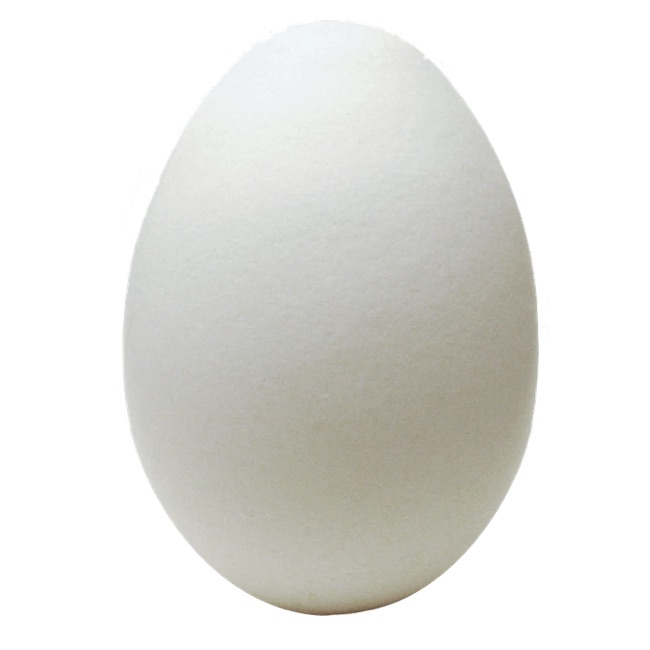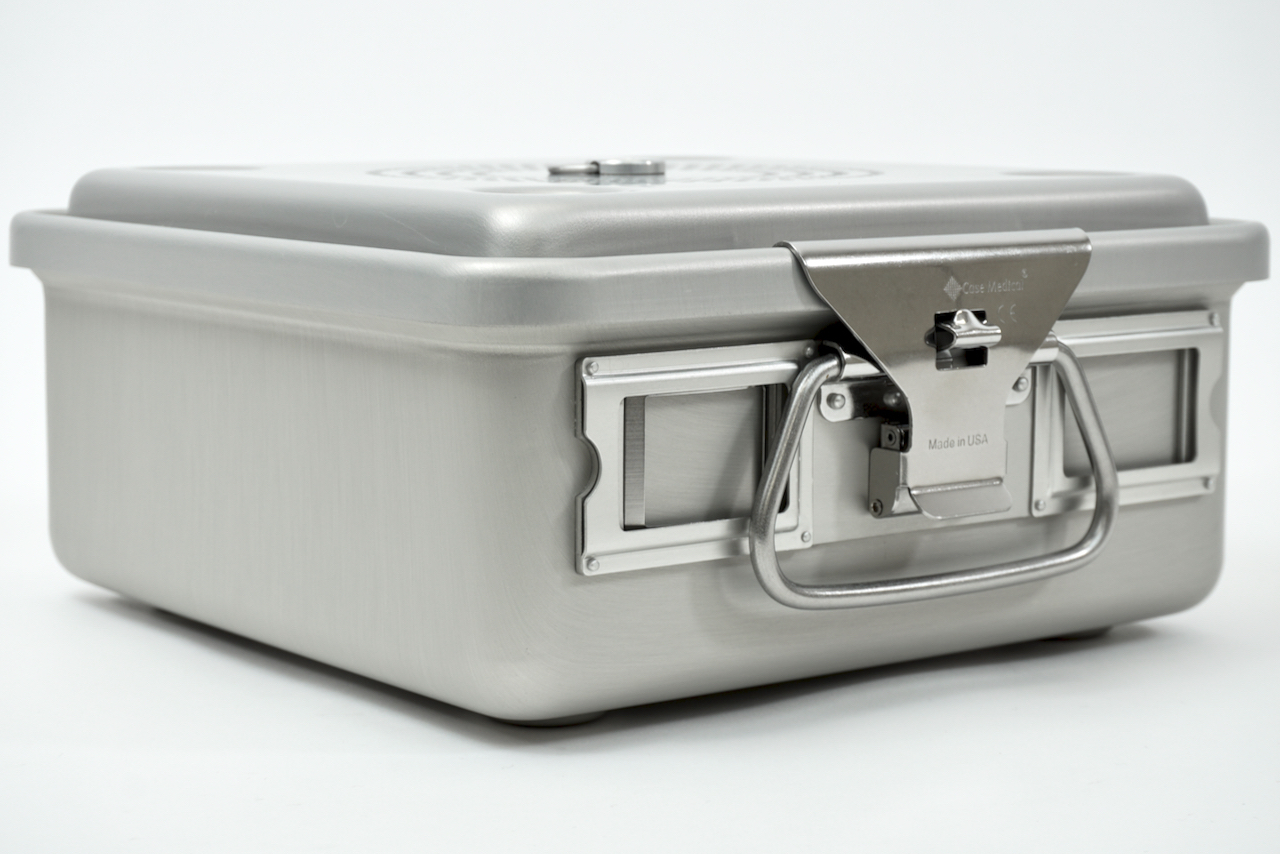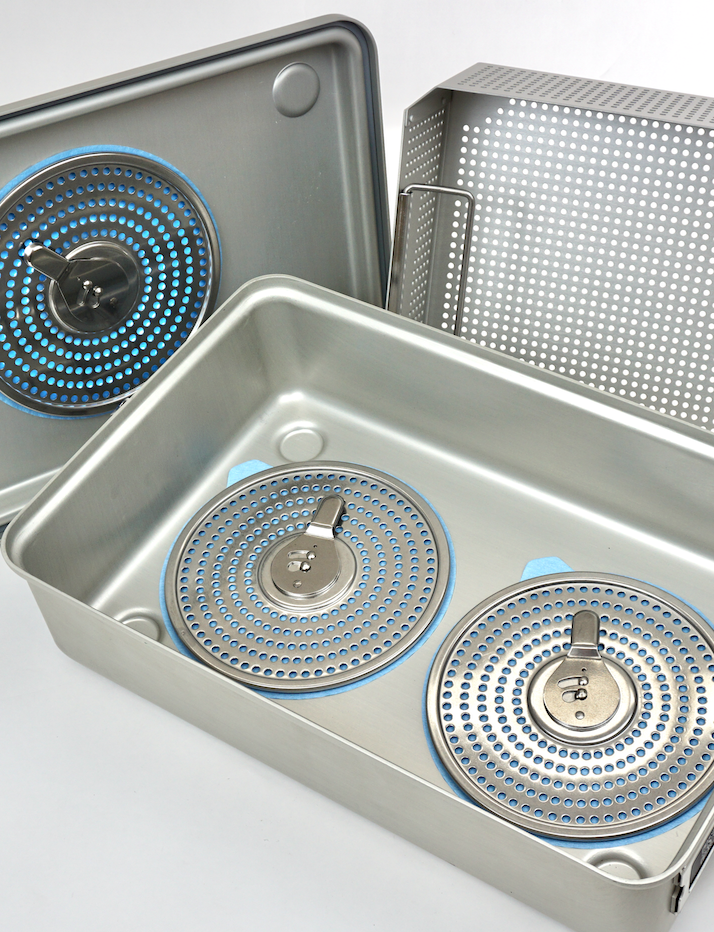
The egg: Miracle of nature
Consider the job the egg has to do; top of the list is protect the contents from physical damage and maintain the sterile environment within. Hmmm, sound familiar. Structurally the egg is incredibly strong. The reason is the egg's arched shape. Engineers and architects know that an arch is one of the strongest forms around. The smooth curve of an arch can support the weight of buildings and bridges for hundreds of years. Look at a SteriTite container, you’ll see the arched curves throughout, the rounded corners of lid and base, the arch like form of the lid channel, and the joggle around the base, making our containers incredibly strong. Plus the rivetless case assembly, means no holes or channels to compromise the load.
An aluminum shell
Anodized aluminum is the ideal material for sterilization containers. Drop an egg and it will break, splat. Unlike the eggshell made out of calcium carbonate, all SteriTite containers are crafted from aircraft grade aluminum that is anodized and passivated for strength and corrosion resistance. Aluminum is itself a wonderful material to work with. It is flexible enough so that we can consistently shape a flat sheet into the curves and contours of a SteriTite container, while taking advantage of the structural strength created by the three-dimensional arches. Aluminum has the added benefit of being malleable, so if it gets bent, chances are it can be unbent. You can’t unbend an egg or a plastic tray.


SteriTite patterned after nature
Let’s consider the egg again. Immediately beneath the shell are two membranes, the outer and inner shell membranes. These membranes protect the contents of the egg from bacteria in fact keeping out all environmental contaminants. Just like an egg, we use two layers of protection in our design, the container itself and the inner basket to protect the contents. Then to maintain sterility, we use a physical filter made of either medical grade cellulose or polypropylene and an additional layer of protection in the form of Case Medical’s filter retention plates, designed with an offset vent hole pattern. The holes of the SteriTite container will never align with the holes of the filter retention plate. This offset pattern means that filter punctures are virtually eliminated by our design, and the contents are protected from environmental contamination. However, the filter membrane allows the sterilant to penetrate, and air and moisture to exit.
Thermo-conductivity for terminal sterilization
Just like an egg needs to transfer the warmth of “mama” hen to the contents of the egg, the container needs to transfer heat and sterilant to the devices within. A SteriTite container has incredible thermal qualities, specifically, the ability to transfer and hold heat, such that you can get terminal sterilization with a minimal 5 to 8 minute dry time. Further, differing from other metals, aluminum cools very quickly, crack the door of the autoclave for 10 to 15 minutes, set aside on a rack for a few minutes more, while the container becomes safe to the touch. Moisture is now eliminated. In fact, there is no other metal, not stainless steel, or titanium, and certainly not plastic, that can rapidly transfer heat and cool.


The Right Choice
SteriTite containers are no “Humpty Dumpty”. The SteriTite® container system (unlike an egg) is reusable, designed to be opened and closed time and again. However, SteriTite containers are not indestructible. Expose them to caustic chemicals, neutralizers, cart washer cycles with recycled water, and even worse with softened water, and you risk stripping the protective anodized layer and reducing the useful life of the container. Our compliments to “mother nature” for giving us such great examples of how to build a durable sterilization system. Now, it’s up to you, avoid the use of caustic cleaners. Rinse thoroughly after cleaning and do not use of any sheeting or finishing agents. The container works best when there is no chemical residue, and the container and its contents are completely dry.
Do you need an assessment or in-service?
If so, maybe it’s time to take a look at your processes, Case Medical is here to help. Contact us at [email protected], or visit us anytime at www.casemed.com to learn more about our products and services.
Marcia Frieze and the Case Medical team





